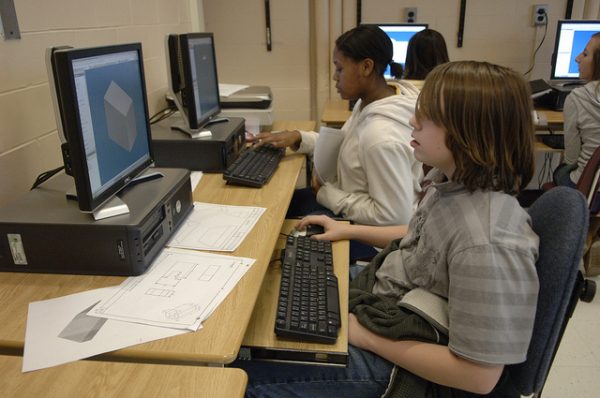
In a scene familiar to today’s teachers, several students in the classroom are glued to their screens: one is posting to social media, one is playing a computer game, and another is hacking their way past the school’s protective firewall with the skills they perfected from years of interaction with the Internet. Are these students wasting class time or honing the skills that will make them a future tech millionaire? New research from Matthew Rafalow finds that teachers answer that question differently based on the social class and race makeup of the school. Schools that serve primarily White, more privileged students see “digital play” such as video games, social media, and website or video production as building digital competencies that are central to success, while schools that serve larger Latino or Asian populations view digital play as irrelevant or a distraction from learning.
Based on observations of three technology-rich Bay Area middle schools, Rafalow examined whether the skills students develop through digital play are considered cultural capital — skills, habits, and dispositions that that can be traded for success in school and work. Although digital play can lead to skills like finding information online, communicating with others, and producing digital media, classed and raced stereotypes about educational needs and future work prospects affect whether teachers recognize those skills in their students. In other words, Rafalow examined whether teachers reward, ignore, or punish students for digital play in the classroom.
Rafalow found three distinct approaches across the schools. At the first school — a public middle school that largely serves middle-class Asian students — teachers viewed digital play as threatening to their traditional educational practices because it distracted students from “real” learning. Further, teachers believed students comfortable with digital skills could hack standardized tests that had been given electronically. At the second school — a public middle school that largely serves working-class Latino students — teachers discounted any skills that students brought into the classroom through their years of digital play. Instead, teachers thought introducing their students to website design and programming was a more important part of preparing them for 21st century working-class jobs. In contrast, at the third school — a private, largely White middle school — teachers praised skills students developed through digital play as crucial to job success and built a curriculum that further encouraged expression and experimentation online.
The ways teachers in this study approached digital play provide a clear example of how raced and classed expectations of students’ futures determine the range of appropriate classroom behavior.

Comments